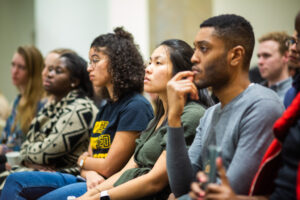What is Atmospheric Pressure – Atmospheric pressure, a fundamental concept in meteorology and physics, plays a crucial role in shaping our planet’s weather patterns and sustaining life. This article aims to provide a comprehensive understanding of atmospheric pressure, its impact on weather, applications in everyday life, and its significance in the broader universe.
Understanding Atmospheric Pressure
Atmospheric pressure refers to the force exerted by the weight of the Earth’s atmosphere on a given surface area. It is the result of the gravitational pull on air molecules in the atmosphere. As we move higher above the Earth’s surface, atmospheric pressure decreases due to the reduced weight of air above.
Factors Affecting Atmospheric Pressure
Several factors influence atmospheric pressure. The primary factors include altitude and elevation, temperature, and humidity. As elevation increases, the atmospheric pressure decreases. Similarly, as temperature and humidity change, atmospheric pressure varies accordingly.
The Role of Atmospheric Pressure in Weather
The distribution of atmospheric pressure across the Earth plays a pivotal role in weather patterns. High-pressure systems are associated with clear skies and stable weather, while low-pressure systems often bring clouds and precipitation. The movement of air from high to low-pressure regions influences wind patterns, contributing to various weather phenomena.
Measuring Atmospheric Pressure
Atmospheric pressure is measured using devices called barometers. The most common type is the mercury barometer, which relies on the height of a mercury column to indicate atmospheric pressure. Digital and aneroid barometers are also used for accurate readings.
Importance of Atmospheric Pressure
Atmospheric pressure has significant importance in different aspects of life. In air travel, changes in barometric pressure are essential for safe takeoffs and landings. Human health can also be influenced by atmospheric pressure changes, leading to conditions like altitude sickness. Moreover, atmospheric pressure plays a role in natural events such as hurricanes and tornadoes.
The History of Atmospheric Pressure Studies
The study of atmospheric pressure dates back centuries. Evangelista Torricelli’s invention of the mercury barometer in the 17th century was a groundbreaking achievement that allowed for accurate pressure measurements. Since then, numerous scientists and meteorologists have contributed to our understanding of atmospheric pressure and its effects on weather.
Applications of Atmospheric Pressure in Everyday Life
The impact of atmospheric pressure can be seen in various everyday devices and activities. Vacuum cleaners operate on the principle of creating a pressure difference to suck up dirt and debris. Weather forecasting heavily relies on atmospheric pressure measurements to predict upcoming weather conditions. In recreational activities like scuba diving, understanding pressure is crucial for diver safety.
Atmospheric Pressure on Other Planets
Atmospheric pressure is not unique to Earth. Other planets in our solar system also have atmospheres with varying pressure levels. For example, Mars has a thin atmosphere with much lower pressure compared to Earth. Venus, on the other hand, has an extremely dense atmosphere with a crushing atmospheric pressure. Understanding atmospheric pressure on other planets helps us appreciate the uniqueness of Earth’s conditions.
Conclusion
In conclusion, atmospheric pressure is a vital force that shapes our planet’s weather and influences various aspects of our lives. From weather forecasting to air travel, understanding atmospheric pressure is essential for our safety and well-being. Moreover, studying atmospheric pressure on other planets expands our knowledge of the universe’s diversity.
FAQs
- What units are used to measure atmospheric pressure?
- Atmospheric pressure is often measured in units of millibars (mb) or inches of mercury (inHg).
- Why does atmospheric pressure decrease with altitude?
- As one moves higher above the Earth’s surface, there are fewer air molecules above, leading to a decrease in atmospheric pressure.
- How does atmospheric pressure affect weather patterns?
- Atmospheric pressure differences drive the movement of air masses, influencing wind patterns and contributing to various weather conditions.
- Can atmospheric pressure impact human health?
- Yes, changes in atmospheric pressure can affect human health, particularly at high altitudes, leading to altitude sickness.
- Is atmospheric pressure the same on other planets?
- No, atmospheric pressure varies significantly on other planets, depending on their atmosphere’s composition and density.




